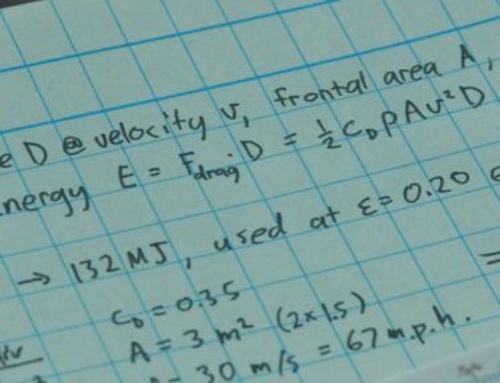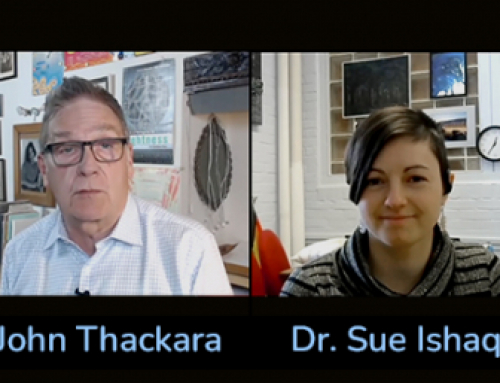This is my talk from yesterday in Helsinki at Pixelache University. There are pix here
Could the biosphere be saved by six glass lamps, six speakers, 36 ultra bright leds, six diy mono amplifiers, a diy arduino-based six channel led dimmer, a six channel soundcard, a midi controller, a midi interface,one computer, and a max-msp application ?
It all depends on how radical and open-minded we are prepared to be in the search for alternatives to physical travel.
Traveling without moving has become an economic and environmental imperative. Matter is more expensive than energy; energy is more expensive than information; it is cheaper to move information, than people or things. So what is to stop us moving less, and and tele-communicating more?
Telecommunications companies have invested heavily for years in telepresence systems with the aim of reproducing as closely as possible the sensation of ‘being there’. Hewlett Packard describe their system, Halo as “the ultimate collaborative environment… a telepresence solution that brings meeting attendees from around the globe into an environment that feels as if they are in the same room”.
The entertainment industry has also been busy – motivated by the fact that people will pay theme park operators a dollar a minute to experience sophisticated simulations. The small-screen computer games industry is already bigger than Hollywood; social website proprietors are also keen to add functionality; so big money is at stake.
Presence researchers are testing myriad ways for us to interact with virtual worlds in this ‘fakespace’ race: Computerized clothing that recognizes physical gestures; accelerometers that track movements of the body; sensors that track eye movements (first developed by shop designers); joysticks that allow interaction with 3-D magic wands; feedback systems that measure force, pressure, or vibration; remote operation systems that translate human movements into the control of machinery.
With so-called haptic interface devices, you feel the motion, shape, resistance, and surface texture of simulated objects.Telerobotic manipulators, that incorporate actuation, sensor, and control technologies, permit us to achieve dexterous manipulation of virtual objects.
Sound is also being designed for “acoustigraphic” environments in which 3-D sound is combined with stereoscopic vision to help you hear the sounds of traffic in the distance and wind rustling the leaves of nearby trees. A Displaced Temperature Sensing System enables you to feel the temperature of a remote location – real or unreal – as if you were there.
Down the line, technology developers that tiny micro-lasers will scan pictures directly onto the retina of the eye – an effect already experienced by military pilots. A company called Cyberware has developed 3d whole-body scanners which create representations of people – avatars – that can act for corporeal people in “inhabited information spaces”. The business plan is that you’ll be scanned in AvatarBooths – as happens now with passport photographs in railway stations. Having digitised your body, you’ll send it out into cyberspace where it will meet and hang out with other avatars. (The project was was nicknamed Immortality R Us by fellow researchers).
Other developers dream of scaling up such effects to create virtual electronic crowds. A project in Europe called eRENA focussed on information spaces inhabited jointly by audience members, performers, and artists: they would explore, interact, communicate with one another and participate in staged events.
Remote sensing may also be used to create immersive representations of otherwise inaccessible places. Real-time sonar and acoustic tomography data could become a display of undersea terrain and objects. An acoustigraphics library would stream the noises made by fish into the mix.
BEING THERE – – – NOT
Evelina Domnitch (who is here at Pixelache) and Dmitry Gelfand directly convert sound into lightwaves by employing a phenomenon called sonoluminescence. They create sensory immersion environments that merge physics, chemistry and computer science with uncanny philosophical practices.
The problem with these intriguing ideas is that it would never occur to telcos to develop them. Despite five decades of effort, the promise of virtual presence ushered in by the of the videophone, which was launched with much kerfuffle by IBM at the 1964 New York World’s Fair, has not been met. Huge investments in virtual environments, mobile communication and biosensors have delivered modest results at best. Tele-presence communication has not matured as an experience, nor as a market.
Even its advocates remain unimpressed: The head of videoconferencing of a large British TelCo told me that he and his colleagues avoided used their own system if they possibly could.
A reality check for technology optimists: whilst high bandwidth videoconferencing has strugggled, simpler forms of remote communication have boomed – POTS they call it in the telecoms trade, or “Plain Old Telephone Service”. Two billion people now have handsets because they want POTS – not because they want virtualty. The lowest bandwidth communication, texting, enjoys the highest volume by far.
TelCos are needlessly obsessed with Being There-ness in a literal sense. As MediaLab rsearcher Skip Ishii points out, the human eye has something like 40 million receptors in it. Many millions more receptors are to be found in our ears, up out noses, in our skin and on our tongues. (There are dense clusters of receptors elsewhere on the body, too – but this is a family readership, so I will not dwell on those).
Even if you could capture the smells, sounds, tastes, and feel of a place, digitise them, and send them down a wire – you’d still never get near the sensation of Being There. Why? We’d just know, that’s why. Our minds and our bodies are one intelligence.
Subliminal perception, perception that occurs without conscious awareness, is not an anomaly, but the norm. As Tor Norretranders has explained, most of what we perceive in the world comes not from conscious observation but from a continuous process of unconscious scanning. During any given second, we consciously process only sixteen of the eleven million bits of information that our senses pass on to our brains. The conscious part of us receives much less information than the unconscious part of us.
This is why technology simply cannot and will not recreate what it is like to be in a meeting with people somewhere else. People, who have bodies, cannot inhabit virtual space. Hubert Dreyfus, a philosophy professor, puts it more poetically: “Tele-hugs won’t do it.”
The fact that we inhabit bodies, and not networks, frustrates games designers. They complain about the “uncanny valley” dilemma. Game designers once hoped that crisper 3-D graphics and faster response-times would deliver a more realistic experience. In the event, higher bandwidth and faster speeds does nothing to increase our sense of an environment being ‘real’.
The uncanny valley effect was explained by a robotics engineer, Masahiro Mori, to explain why almost-human-looking robots scare people more than mechanical-looking robots. The uncanny valley of Mori’s thesis is the point at which a person observing the creature or object in question sees something that is nearly human, but just enough off-kilter to seem eerie or disquieting.
Cognitive pyschologist Andy Clarke, author of Being There: Putting Brain, Body and World Together Again adds that the biological brain is populated by a vast number of what he calls hidden ‘zombie processes.’ These underpin the skills and capacities in which successful behaviour depends.
“Being embodied is our nature as earth-born creatures” says the English philosopher, John Gray. But our infantile enchantment with digital communication blinds us to this fact. Our tendency to undervalue embodied knowledge is one of the root causes of the sustainability crisis.
OUT OF THE SILOS
Telepresence sucks. It’s an insult that telcos should expect us to meet in hideous sterile rooms in front of huge screens.
But sustainabiity demands that we compromise; the biosphere cannot support the perpetually growing movement of goods and bodies around the world. We have to make the best we can of mediated presence.
So we have to keep on trying. But there are more interesting tasks for design than the use of brute bandwidth to achieve ‘Being There’ verisimilitude. The communication quality of cyberspace can be enhanced by artful and indirect means.
A first task is to escape from our disciplinary silos. Engineers try to coax more bandwidth out of pipes. Psychologists study communication behaviours. Philosophers talk about embodiment. Artists make beautiful interfaces. But they barely know that each other exists – let alone pool their knowledge and resources.
Some designers have tried out a more poetic and multi-dimensional approach. Twelve years back, in The Poetics of Telepresence, Tony Dunne and Fiona Raby looked at the potential of fusing physical and telematic space. They asked, why should videoconferencing always be face to face? why limit contact to speech, or sight? They proceeded to use radio to trigger heat devices remotely, and proposed other techniques to evoke, and not just replicate, the shared experience of the remote body.
Half a decade ago in Italy, design researchers in a project called Faraway also looked at long distance communication between loved ones who are physically distant, but emotionally close. The team explored what happens when gesture, expressions, heartbeat, breathing, alpha- and beta-rythm informnation are incorporated into long-distance communication. The idea was to increase the sense of presence of a loved person over distance – but indirectly.
Replicating heartbeats is not the only way to go.
Seventy years ago, Walter Benjamin marveled at the capacity of the aura of an original art work to spur our imaginative engagement wth a situation. Or think how much the religions achieve with the use of icons as aids to devotion; if lumps of bronze help millons of people commune with a deity, surely we can enhance telepresence using other kinds of objects.
Think of photographs. The philosopher Ludwig Wittgenstein wrote about kissing the picture of one’s beloved. “When we kiss a photograph, we do not expect to conjour up a spectacular manifestation of the person in the picture represents – but the action is nonetheless satisfying”.
Evolutionary psychologists believe that magical ways of thinking may be hardwired into us, and cite as evidence the human capacity to invest inanimate objects with meaning…souvenirs, heirlooms, chldhood toys, objets d’art, dolls, totems, talsmans, and charms.
It’s probably a matter of timing. Here we are at Pixelache, and the world needs artful telepresence more urgently than before. Can we please get on with it? Now!






